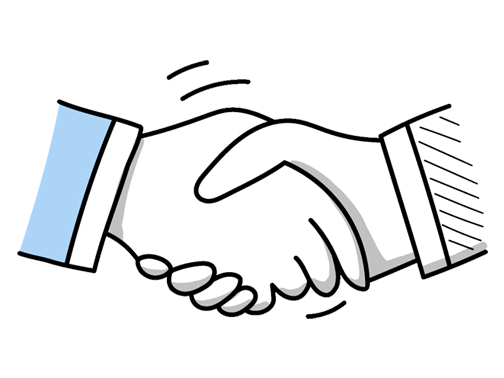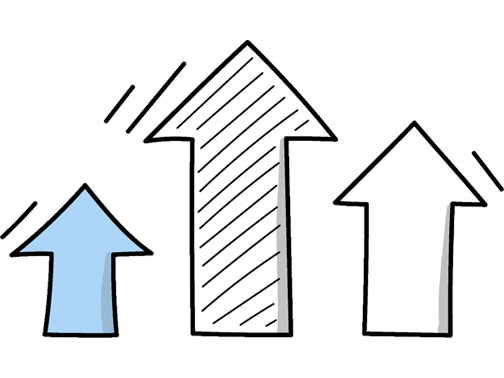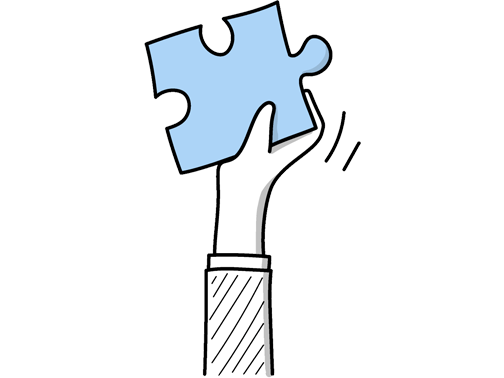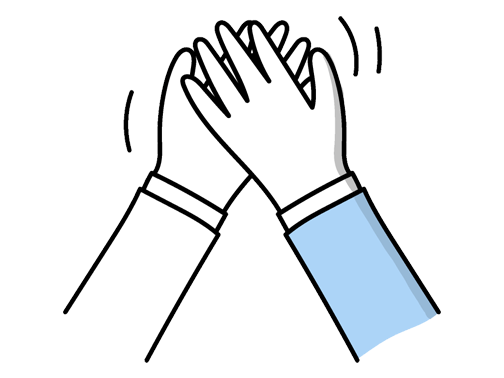Apprentice Jeweler Interview Questions (2025 Guide)
Find out common Apprentice Jeweler questions, how to answer, and tips for your next job interview
Practice Interviews Online - Identify your strengths and weakness in a realistic Apprentice Jeweler mock interview, under 10 minutes
Practice Now »Apprentice Jeweler Interview Questions
Hiring managers ask this question to see if you understand the full resizing process and the attention to detail it requires. In your answer, clearly outline each step from measuring the size with a ring mandrel, cutting and adjusting the band using proper tools, to finishing by soldering, polishing, and inspecting the ring for quality.
Example: Resizing a ring usually starts by measuring the finger to ensure the right fit. If making it smaller, I’d carefully cut out a small section, then solder the ends back together, making sure the joint is seamless. To enlarge it, I’d stretch the band or insert extra metal. Throughout, I’d use tools like a mandrel and torch, then polish and check for any imperfections to keep the ring looking flawless.
Hiring managers ask this question to see how you handle unexpected challenges and ensure quality in your work. You need to explain that you would first identify the specific issue, then adjust your approach to fix it, and finally reflect on the experience to improve your skills for future projects.
Example: If a piece isn’t coming out quite right, I’d first take a step back to figure out where things went off track. Maybe the settings aren’t fitting perfectly or the metal isn’t behaving as expected. From there, I’d adjust my technique or tools to fix it. Afterward, I’d think about what caused the hiccup to avoid it next time—like when I learned to handle delicate stones more gently after a previous mistake.
What they want to know is how you maintain accuracy and avoid errors in your work. You need to say that you carefully check your tools before use, double-check all measurements, and promptly correct any mistakes you find to ensure precision.
Example: When measuring, I always start by double-checking the tools I’m using to ensure they’re calibrated correctly. I take my time, measuring twice to avoid errors. If something looks off, I reassess before moving forward. For example, when making a ring, I measure the diameter carefully and compare it against size charts, making adjustments as needed to keep everything exact.
Employers ask this question to see how you approach challenges and think creatively under pressure. In your answer, briefly describe the problem, the unique solution you came up with, and the positive result it had.
Example: During a school art project, I faced a shortage of materials and couldn’t complete my design as planned. Instead of giving up, I repurposed everyday items, like old buttons and wire, to create unique textures and details. This not only solved the problem but also gave my piece a distinctive look. It taught me that sometimes limitations spark the most interesting creativity.
Employers ask this to assess your understanding of precise, delicate work and safety in jewelry making. You need to explain the specific methods you use, such as torch soldering or laser welding, and emphasize careful temperature control and cleanliness for strong, clean joints.
Example: In jewelry making, I focus on precise soldering techniques, like hard and soft soldering, to join pieces seamlessly. I usually clean and flux the metals carefully to ensure strong bonds and avoid weak joints. For welding, I prefer laser welding for its accuracy, especially on delicate items. It lets me avoid damaging nearby areas while creating a durable connection, which is crucial for fine, detailed work.
Questions like this assess your ability to stay calm and solve problems under pressure to maintain quality and safety. You need to explain how you quickly identify the problem, take practical steps to fix or work around it, and communicate with your team to ensure the task is completed safely and on time.
Example: If a tool stopped working during an important task, I’d first pause to evaluate the issue calmly, ensuring safety comes first. I’d check if a quick fix is possible or switch to an alternative tool to keep things moving. At the same time, I’d communicate clearly with my team or supervisor to avoid any delays and make sure the job stays on track without compromising quality or safety.
What they want to know is how you create an environment that supports careful, precise work and helps you stay focused. You should say that you keep your tools and materials organized, set routines with focused work periods and breaks, and regularly double-check your work to avoid mistakes.
Example: I like to keep my workspace tidy and well-arranged so I can find tools easily and avoid mistakes. Establishing simple habits, like setting aside specific times to double-check my work, helps me stay focused and catch any small errors early. For example, before finishing a piece, I’ll review it carefully to ensure everything aligns perfectly, which keeps both quality and concentration high throughout the day.
Employers ask this question to gauge your technical knowledge and practical experience with gemstones, which is crucial for crafting durable and beautiful jewelry. You should briefly explain your understanding of key gemstone properties like hardness and clarity, mention any relevant training or hands-on experience, and highlight how these factors influence your design choices.
Example: I’ve spent time studying a variety of gemstones, learning about their hardness, color, and how they react to light, which really helps when choosing stones for different designs. For example, knowing that sapphires are durable but emeralds require gentler handling influences how I approach setting them. I’ve also gained hands-on experience through workshops and working alongside experienced jewelers, which has deepened my appreciation for how each stone’s qualities affect the final piece.
Hiring managers ask this to gauge your familiarity with materials central to the job and your hands-on experience. You need to honestly mention any precious metals you've worked with and briefly describe your experience handling them.
Example: I’ve had some experience working with silver and gold during a college project where I crafted simple rings and pendants. It taught me a lot about handling metals carefully and understanding their properties. While I haven’t worked professionally with precious metals yet, I’m really eager to build on this foundation and learn more about different materials and techniques in a hands-on environment.
Interviewers ask this question to see if you have a careful, methodical approach to quality control and understand the importance of precision in jewelry-making. You need to explain how you use tools like magnifiers and calipers to inspect details and ensure everything is secure and even, and how you identify and fix any flaws before finishing a piece.
Example: When I finish a piece, I carefully examine it under good light, checking for any uneven edges or solder marks. I often use a loupe to spot tiny flaws that aren’t visible to the naked eye. If something looks off, I go back and refine it until it meets the standard. Staying patient and attentive ensures each piece feels polished and ready to impress.
Hiring managers ask this to see if you can collaborate and communicate well in a hands-on environment. You need to explain your role clearly, emphasizing how you contributed to teamwork and supported others in the workshop.
Example: Yes, I have experience working in a workshop environment, collaborating closely with others on detailed projects. For example, during a school project, I helped design and assemble small metal pieces alongside peers, where my role was to ensure accuracy and support others by sharing tools and techniques. I enjoy learning from team members and believe that working together helps achieve better quality results.
This interview question helps the employer see how you manage your time and prioritize tasks under pressure while keeping customers informed and satisfied. You should explain how you decide which orders need immediate attention, how you communicate timelines clearly to customers, and how you ensure every detail is correct to avoid errors.
Example: When I’m juggling several customer orders, I first assess which need urgent attention and which can wait a bit. I keep customers informed about their order’s progress, so they know what to expect. While working, I stay focused on the details to avoid mistakes—like double-checking measurements or gemstones—because accuracy matters just as much as timing in jewelry-making. This approach helps me keep things running smoothly and customers happy.
Hiring managers ask this question to see if you can make complex ideas accessible and ensure customer satisfaction. You need to say that you simplify design descriptions using everyday language, actively listen to customer preferences, and use sketches or images to help them visualize the piece.
Example: When explaining design ideas, I focus on keeping things straightforward and relatable, avoiding jargon. I make sure to really hear what the customer wants, so I can shape the explanation around their interests. Sometimes, I’ll sketch the piece or show similar examples to help them picture it better. For example, if a customer isn’t sure about a setting style, a quick drawing often makes everything clearer.
Hiring managers ask this question to see if you’re proactive and dedicated to customer satisfaction. In your answer, describe a specific situation where you took extra steps to help a customer, showing your commitment and problem-solving skills.
Example: Certainly! Here's a concise, natural-sounding response:
Once, a customer wanted a custom ring on short notice for an anniversary. I stayed late to source the right materials and carefully crafted the piece to their vision. Seeing their surprise and gratitude made the extra effort worthwhile, and it reinforced how important it is to go the extra mile to create something truly special.
What they want to know is how you manage customer concerns and maintain trust. You need to say that you listen carefully to the customer's issues, stay calm, and work with them to find a fair solution that ensures their satisfaction.
Example: If a customer isn’t happy with a piece, I’d first listen carefully to understand their concern fully. Then, I’d calmly explain what can be done—whether it’s a repair, adjustment, or remaking the item—to meet their expectations. For example, I once helped a customer adjust a ring’s size and polish it, which made them really appreciate the effort and feel valued. Keeping the conversation respectful and solution-focused is key.
Interviewers want to see that you are responsible, attentive to detail, and proactive in fixing problems. You should say that you carefully check your work, take immediate steps to correct any mistakes, and learn from them to improve future projects.
Example: When I notice a mistake in my work, I first take a moment to understand what went wrong. I then address it quickly—whether that means fixing the piece or starting over. For example, if a stone isn’t set properly, I carefully reset it to avoid damage. I also reflect on how to improve so it doesn’t happen again, turning each error into a chance to get better at my craft.
This question is asked to see if you can spot and fix small errors that could affect the quality of the jewelry. You need to share a specific example where you noticed a detail others missed, explain how you corrected it, and highlight the positive result of preventing a bigger problem.
Example: During a school project, I noticed that a crucial measurement was slightly off on a metal piece. I took a moment to double-check and corrected it before moving forward. This small adjustment saved us from wasting materials and time. It taught me that paying close attention to the smallest details can prevent bigger problems down the line, which I know is essential in jewelry making.
What they want to know is if you have hands-on skills or relevant background that shows your ability to learn and work with jewelry. You should briefly mention any practical experience, even if limited, and emphasize your eagerness to grow and develop your skills in jewelry making or repair.
Example: While I’m new to professional jewelry making, I’ve spent time experimenting with basic repairs and design projects at home, like resizing rings and polishing silver pieces. I enjoy working with my hands and learning from more experienced jewelers. This hands-on practice has given me a solid foundation and a strong desire to develop my skills further in a workshop setting.
Questions like this assess your commitment to quality and your ability to produce flawless work, which is essential in jewelry making. You need to explain how you pay close attention to details, use accurate tools, follow careful procedures, and quickly fix any mistakes to ensure your pieces are precise and well-crafted.
Example: To ensure accuracy, I focus closely on every detail, carefully measuring and double-checking my work at each step. When something doesn’t quite line up, I pause to troubleshoot rather than rush ahead, whether that means adjusting a setting or re-evaluating my approach. This methodical focus helps me avoid mistakes and deliver pieces that meet high standards consistently.
This interview question helps assess your problem-solving skills and ability to communicate with customers when facing complex tasks. You should explain that you would ask detailed questions to understand the challenges, suggest feasible design modifications, and outline a clear plan to prototype or test the design while keeping the customer's needs in mind.
Example: If a customer asked for a challenging design, I’d first listen closely to understand exactly what makes it tricky. Then, I’d explore practical ways to achieve their vision, maybe suggesting slight tweaks to ensure durability or craftsmanship. Keeping the customer involved throughout helps balance creativity with feasibility—like when I helped a client simplify a complex setting so the piece stayed beautiful but was easier to make.
Questions like this assess your understanding of craftsmanship and attention to detail, which are crucial for producing lasting jewelry. You need to explain how you choose quality materials, test your work for durability, and continuously improve your skills through feedback and practice.
Example: To make sure each piece lasts and looks great, I pay close attention to choosing the right materials and use proven techniques during crafting. I regularly check my work for any weak spots and test how it holds up, like gently flexing or examining solder joints. I’m always eager to learn new skills and improve, whether that’s from experienced jewelers or trying out new tools to make my work stronger and more refined.
Interviewers ask this question to see how quickly you can adapt and grow in a hands-on role, which is crucial for an apprentice jeweler. You need to explain how you recognized the need to learn a new technique, the steps you took to learn it fast, and how you successfully used it to complete your project.
Example: In a previous role, I needed to master basic metalsmithing quickly to meet a tight deadline. I started by watching tutorial videos, then practiced simple techniques daily. Applying this new skill, I crafted a silver pendant that matched the client’s design perfectly. This experience taught me how important it is to adapt fast and stay focused when learning something new.
What they want to understand is if you know the essential tools and how they’re used in jewelry making, showing your awareness of the craft. You should mention common tools like pliers, files, soldering equipment, and polishing machines, explaining briefly what each one does.
Example: In jewelry making, some essential tools include files and saws for shaping metal, and soldering equipment to join pieces together. Pliers help with bending and holding small parts, while a jeweler’s loupe allows close inspection of fine details. Polishing machines or cloths give the final shine. These tools all work together to transform raw materials into delicate, beautiful pieces.
Interviewers ask this question to see how well you connect with customers and understand their needs, which is key in jewelry sales. You should say that you listen carefully, ask questions to clarify their preferences, use friendly body language, and adjust how you explain things depending on the customer.
Example: I focus on really tuning in to what each customer is saying, which helps me understand what they’re after. I try to make the atmosphere relaxed and friendly, so they feel comfortable asking questions. Everyone’s different, so I adjust how I communicate—sometimes more hands-on, other times giving them space. For example, if someone seems unsure, I’ll gently guide them, but with confident customers, I’ll let them take the lead.
This interview question aims to see how you handle complex tasks and solve problems under pressure. You need to briefly describe a difficult project, explain the challenge, and highlight the skills or creativity you used to complete it successfully.
Example: One of the most challenging pieces I worked on was a custom ring with intricate filigree details for a wedding. Balancing delicate handwork while ensuring the design was both sturdy and comfortable taught me patience and precision. It was rewarding to see how the small details made the piece truly special for the client, reinforcing the importance of careful craftsmanship in jewelry making.
Ace your next Apprentice Jeweler interview with even more questions and answers
Common Interview Questions To Expect
The interviewer is looking to see how you found out about the job opportunity and what sources you use to stay informed about potential career opportunities. You can answer honestly about how you came across the job posting.
Example: I actually found out about this position through a friend who works in the jewelry industry. They mentioned that your company was looking for an apprentice jeweler and thought it would be a great fit for me. I also regularly check job boards and industry websites to stay updated on new opportunities.
The interviewer is looking for you to highlight your key skills, qualities, and experiences that make you a strong candidate for the position. Be honest and specific in your response.
Example: I would say my biggest strengths are my attention to detail, my creativity, and my ability to work well under pressure. I have a keen eye for precision when it comes to crafting jewelry, and I love coming up with unique designs. I also thrive in fast-paced environments and can handle multiple tasks at once.
Candidates can answer by stating a specific salary range, mentioning their willingness to negotiate, or asking about the company's salary structure. Interviewers are looking for candidates who are realistic, confident, and have done their research on industry standards.
Example: I'm hoping to earn between £18,000 to £22,000 per year, but I'm open to discussing and negotiating based on the responsibilities and opportunities within the role. I've done some research on industry standards for apprentice jewelers in the UK, and I believe this range is fair and competitive.
The interviewer is looking for a candidate who has done their research on the company, understands its values, products, and services, and can demonstrate a genuine interest in working for them.
Example: I've done some research on your company and I know that you specialize in creating unique and high-quality jewelry pieces. I'm impressed by your commitment to craftsmanship and attention to detail. I believe my passion for jewelry making aligns well with your company's values.
The interviewer is looking for the candidate to show interest in the company, the role, and to demonstrate their knowledge and preparation for the interview. They want to see that the candidate is curious, engaged, and eager to learn more about the company and the position.
Example: Yes, I was wondering if there are opportunities for growth and advancement within the company for apprentices like myself. I am also curious about the training and development programs in place for new jewelers. Lastly, I would like to know more about the company culture and what it's like to work here.
Company Research Tips
The company's website is a goldmine of information. Look for details about the company's history, mission, and values. Pay special attention to any sections about their craftsmanship, materials used, and design philosophy. This will give you a sense of what they value in their jewelers and can help you tailor your responses during the interview. Also, check if they have any blogs or articles about their work process, as this can give you insights into their day-to-day operations.
Tip: Don't just skim through the website. Take notes and try to understand the company's ethos. Look for any unique aspects about their jewelry making process that you can mention during the interview to show your thorough research.
Social media platforms like Instagram, Facebook, and LinkedIn can provide valuable insights into the company's culture, their latest collections, and customer feedback. Look at the comments and reviews to understand what customers appreciate about their jewelry. This can give you an idea of the quality standards expected from their jewelers. LinkedIn can provide information about the company's size, structure, and key employees.
Tip: Follow the company on these platforms to stay updated about their latest news. Engage with their posts if appropriate. This can show your interest in the company during the interview.
Keeping up-to-date with the latest trends in the jewelry industry can be beneficial. Look for news articles, blogs, and forums discussing the company or the industry. This can give you a broader context of where the company stands in the market and any challenges it might be facing. Understanding the current trends can also help you discuss how you can contribute to the company's future growth.
Tip: Use Google Alerts to stay updated about any news related to the company or the jewelry industry. Mentioning a recent industry trend during the interview can show your passion and knowledge about the field.
Understanding the company's competitors can give you insights into the company's unique selling points and areas they can improve. Look at the competitors' websites and social media platforms to understand their products, pricing, and customer feedback. This can help you discuss how you can contribute to the company's competitive edge during the interview.
Tip: Don't criticize the competitors during the interview. Instead, use this information to highlight the company's strengths and how you can contribute to enhancing these.
What to wear to an Apprentice Jeweler interview
- Clean, well-fitted suit in neutral colours
- White or light-coloured button-down shirt
- Polished dress shoes
- Minimal, tasteful jewelry
- Neat, professional hairstyle
- Light, natural makeup for women
- Clean, trimmed nails
- Avoid flashy or distracting accessories
- Carry a professional bag or briefcase





